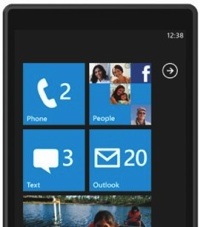
There was recently a little skirmish on the web regarding the question of whether or not Microsoft has stopped innovating — whether the internal corporate culture there has thwarted new ideas, and so on. Well, I think we can all agree that Microsoft hasn’t exactly been an innovation machine in recent years; although, with as little currency as the word “innovation” has these days, that’s not saying much — but the fact is that its products haven’t shown as much ingenuity as its competitors in nearly every arena. And like a dragon guarding its hoard, it has striven primarily to maintain its stranglehold on enterprise, which makes up the vast majority of Microsoft’s treasure intake. Who can blame them? You wouldn’t give up a goose that laid golden eggs either. But the the goose is getting old, and people are getting tired of eggs. What’s the next step?
Gates once famously said his greatest fear was “someone in a garage who is devising something completely new.” So the solution is simple: start building garages.
Of course, we must be fair to Microsoft and say that they probably have as many metaphorical garages as anyone else in the world. Microsoft Research and Microsoft Labs, among many other experimental sections, employ an immense amount of people, and frequently come out with really cool stuff. The trouble is that something in the structure of Microsoft’s complex interlocking-teams method of management prevents these things from being anything other than great ideas. Look at Google. Their “release early, release often” strategy not only familiarizes people with the products, but also inures them to the “beta” process (some more than others), and lastly, allows Google to gauge the weight each project should have. It’s not a failure when something like Orkut doesn’t take off: it’s a successful risk assessment.

The trouble, I feel, lies in the middle layer of the cake — as it does so often in real life (damn the jelly). The issue is that the best ideas often occur on the lowest levels, as much because those levels are highly populated as that they are the youngest and freshest, and these ideas must trickle up. That is, from what I understand of Microsoft (very little), in fact how it was designed. Good projects gain members and budget by degrees and snowball until they reach product status. The idea is that the whole process is smooth and practically automatic. And isn’t it pretty to think so? Unfortunately, when you factor in the inevitable corporate friction, you’re looking at years of development for a product which may or may not even be worthwhile. By the time the sausage is made, everyone has already moved on to quail. If there were an easy solution to this I’m sure everyone would take it, but Google’s seems to be the best approach when you’ve got a steady supply of golden eggs, as both they and Microsoft do in the form of advertising and enterprise revenue respectively.
Microsoft is simply too big and too inflexible to really push truly interesting products out the door as fast as they need to. This isn’t any sort of big revelation, but it’s a problem with a solution: turn the company upside-down. Give the people with infinite power to crush and elevate projects direct access to the “garages” (or rather, give the garages access to them) and let them rule their arbitrary way. If they’re really as smart as they should be in order to hold a position of such power (no guarantee there), then you’ll nip non-starters in the bud and get millions into the market-breakers. The Microsoft method of slowly advancing employees’ responsibilities has created so many middle men that there is hardly any other kind of person working there any more.
The best examples for this are also the best examples of the current system failing. I’ll be honest: these are in fact my favorite pet projects of Microsoft’s and are by no means successes yet, though in my fantasy alternate universe they might have been.
 Item: Surface
Item: Surface
What does it tell you when an innovative and forward-looking project has had the same hardware for some four or five years, and despite getting a nod from Gates himself in 2003, took four years to reveal — and three years later it’s still completely inaccessible to consumers? Sure, it’s “not a consumer device.” Who do you think made that decision? Not the project team, who almost certainly envisioned a number of consumer applications. Someone limited the scope of the project and restricted its growth, even when the iPhone came out and vindicated the consumer concept. The aborted tablet project of the early 2000s and Surface might have been pushed together by a budget-slinger with vision, and they might have put out the iPad in 2006. Which brings us to the Courier.
 Item: Courier
Item: Courier
Pop quiz, hot shot: the entire tech world is buzzing with the idea of a tablet device by one of your primary competitors. Someone leaks video of a project that is totally original and totally doable, and the internet goes wild (kind of). What do you do? A: shower the team with gold and see how fast they can whip out a prototype, which you can show at CES, pre-empting your competitor? or B: continue working on a boring design with a vanilla PC maker, that is in fact something no one wanted when you showed it last time. To be fair, it seems that Microsoft may have done a little bit of both. But Ballmer himself professes ignorance of the Courier project, and we still have yet to see one in the wild. This could have taken a lot of bit out of the iPad announcement.
We had word yesterday that the Courier is running Tegra 2 and will implement some Zune stylings. Well, that puts it at least on a hardware par with the iPad and it fits with the increasingly Zune-reliant design of Microsoft’s handheld devices. Unified interface? Office applications? E-book functionality? Check, check, and double check — but instead they lay money on an awkward and underpowered shrink-down of Windows 7. Again, who made this decision? Some board room jockeys likely voted 7 to 4 to “emphasize existing properties.” If there was an informed and alert adjudicator with a nice big slush fund, this thing might have been hands-on at CeBit.
 Item: Multi-touch mice
Item: Multi-touch mice
What can I say? Get a team of talented, creative people, refuse to settle on a design, and watch your competitor put out the exact product you were thinking of. All it would take is for someone to walk into the same room I did, get the same demo I did, and then point with his index finger. “That one.” Call up in-house prototyping and you’ve got a working model in two months. It’d break a few hearts to scrap the excess designs, but how many designs do you think Apple scrapped for the iPod? Those heartbroken designers now live in houses of solid gold. And they eat pearls for breakfast. Not an exaggeration.
 Item: Windows Phone 7 Series
Item: Windows Phone 7 Series
What better icon for Microsoft’s inertia than Windows Mobile? Every release has been more and more out of date, by reason that its competitors moved faster and didn’t have quite the legacy install base to worry about. When you make a big deal out of something like 6.5 years after the iPhone, and when Google is putting out Android 2.0, you might as well be selling telegraph poles. Meanwhile, slouching slowly towards release is Windows Phone 7 Series (yeah – they’ll need to change the name), which while still behind the times (and getting more so every day it’s released in Q4 2010), is a shot in the arm for Microsoft’s entire mobile division. A whole new design aesthetic! Apps! A decent media player! They knew they had a winner on their hands sometime before the launch of the Zune HD, which they rightfully called part of a new platform.
Once again: whose idea was it to wait until WinMo 6 had completed its graceful conversion into a complete wreckage? Well, someone worked real hard on the 6.5 app store and Today screen, and they wouldn’t want to steal 6.5’s thunder (cough) by announcing its successor at the same. Here is where, a year and a half ago, a smart person with a free hand might have said “sorry guys, you’re polishing the knobs on the Titanic. Finish what you’re working on, then you’re going to App development for the new hotness.” No sales would have been lost, and 7 would have launched (consulting arbitrary number calculator) six months earlier. Or something.
Okay, okay. I admit it. The only point I’m really making (in so many words!) is one that’s so obvious that it’s hardly worth saying: “Smart people should be giving money to promising projects and culling projects that have no future.” Any company could use more of that, and in the end this is mostly just a rant about the inertia that takes over big companies. But Microsoft has a track record of getting beaten to the punch because of a simple lack of boldness. They’re on the cutting edge and they refuse to acknowledge it. I’m slightly ashamed to say that I am reminded of the bar scene in Swingers where Jon Favreau is assured that he has claws and just doesn’t know what to do with them.
What I’m seeing, though, is that maybe Microsoft is starting to get this. The projects above were major breaks from Microsoft’s staples, but are finally getting the juice they deserve. I feel like I’m at a “mandatory innovation seminar” saying this, but taking a few serious risks is the only way Microsoft will be able to stay competitive for the rest of its dwindling lifetime. If they can put their trust (and their war chest) into the hands of a few worthy idea wranglers, they’ve got a fair chance of turning Microsoft Research into Microsoft Pile Of Money.
The bad news for Microsoft is that the only products anybody is excited about are the ones most unlike what they’ve been doing for 20 years. The good news for Microsoft is that they’re making products unlike what they’ve made for 20 years, and people are excited about them. It might just be too late and every project I mentioned will be torn to shreds by Apple, Google, and the other wolves pawing at Microsoft’s door. But I think that at the final accounting, people will be able to look back and say “Well, it didn’t save them, but towards the end there, they actually started to get it.”
TL;DR:
